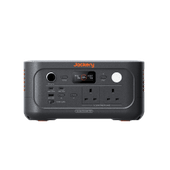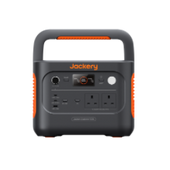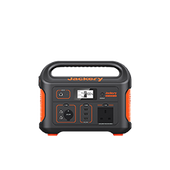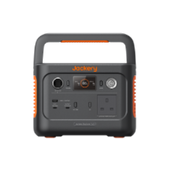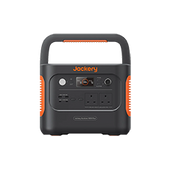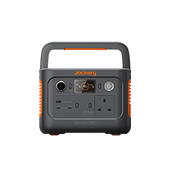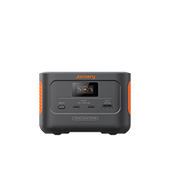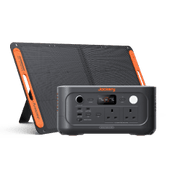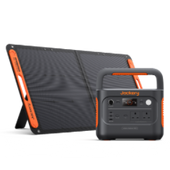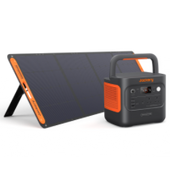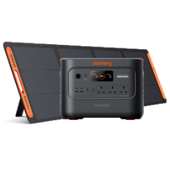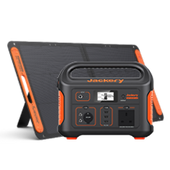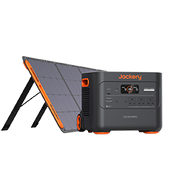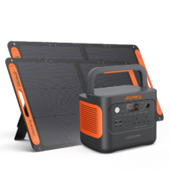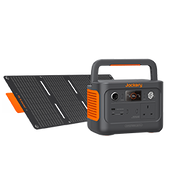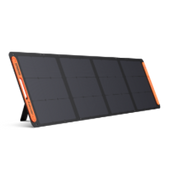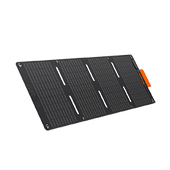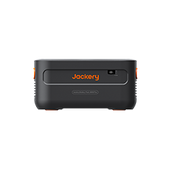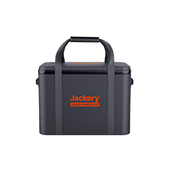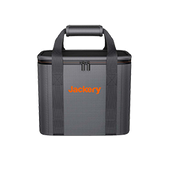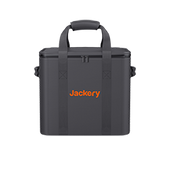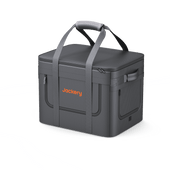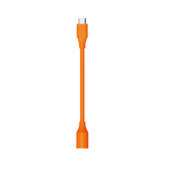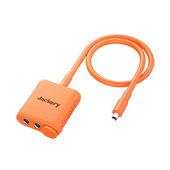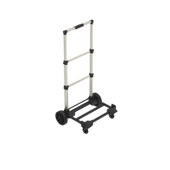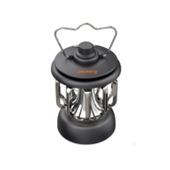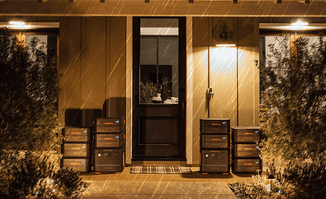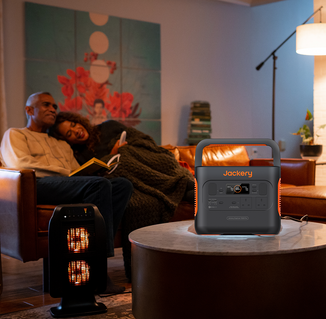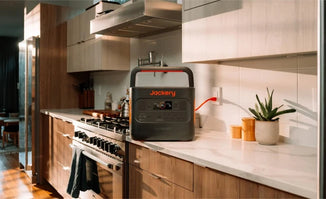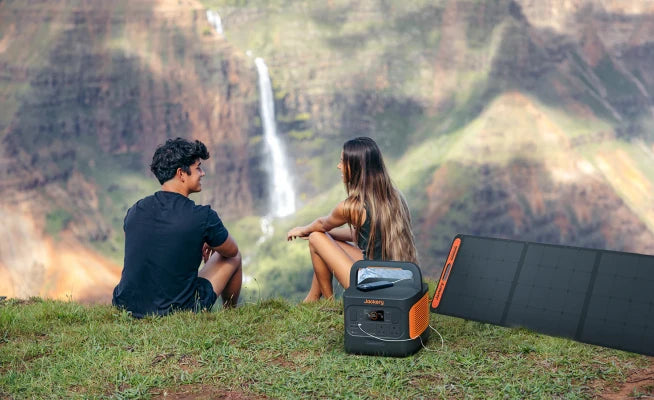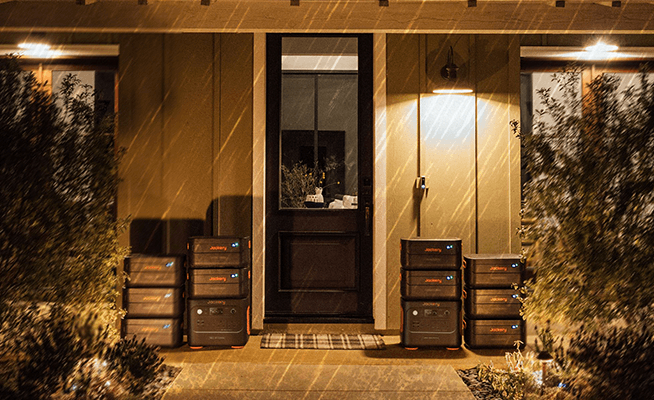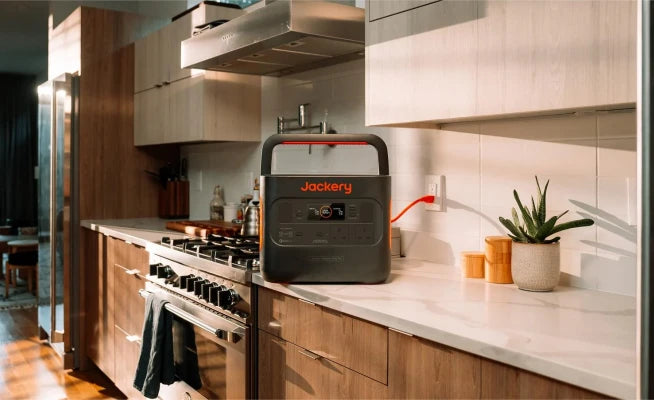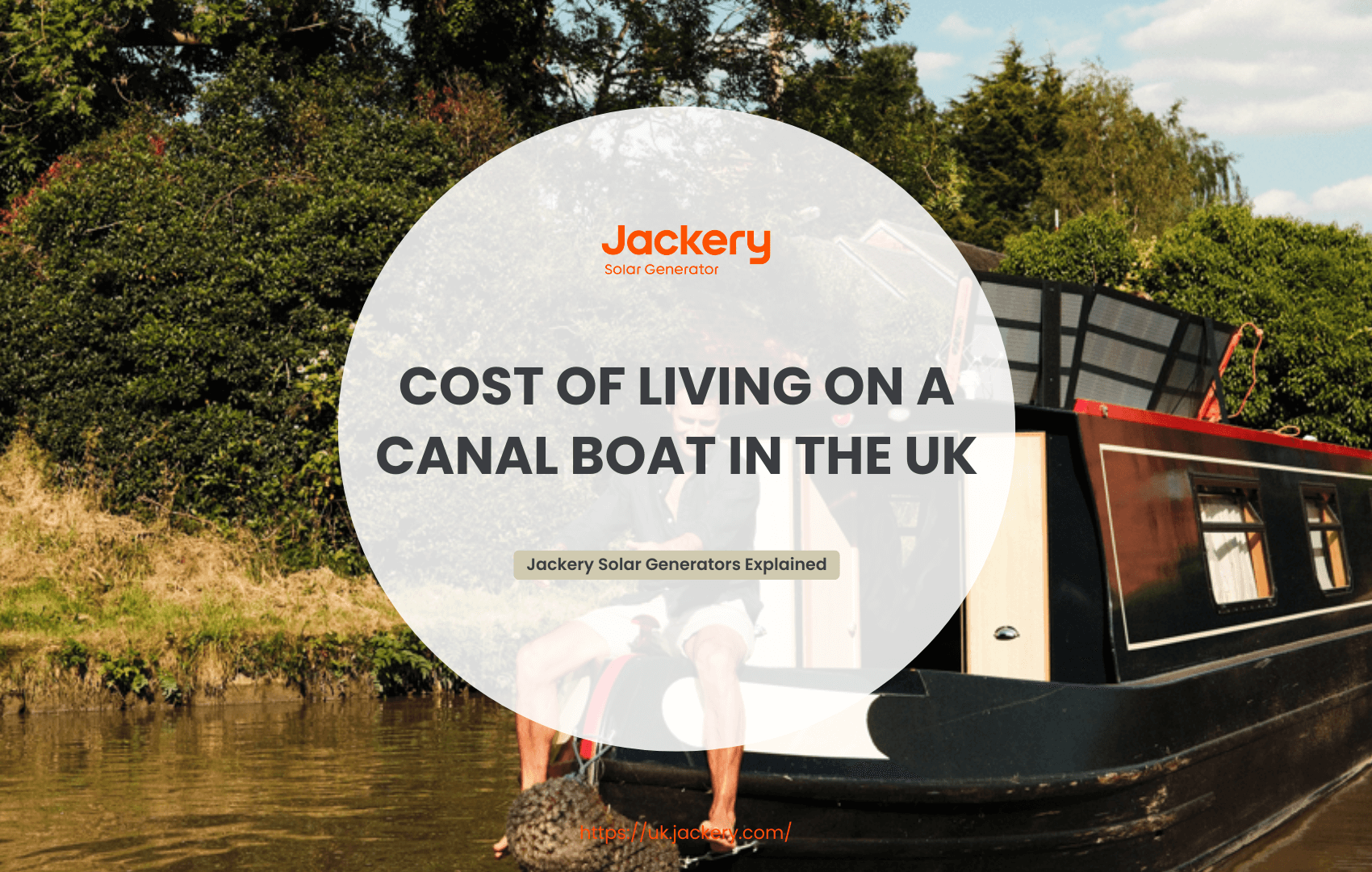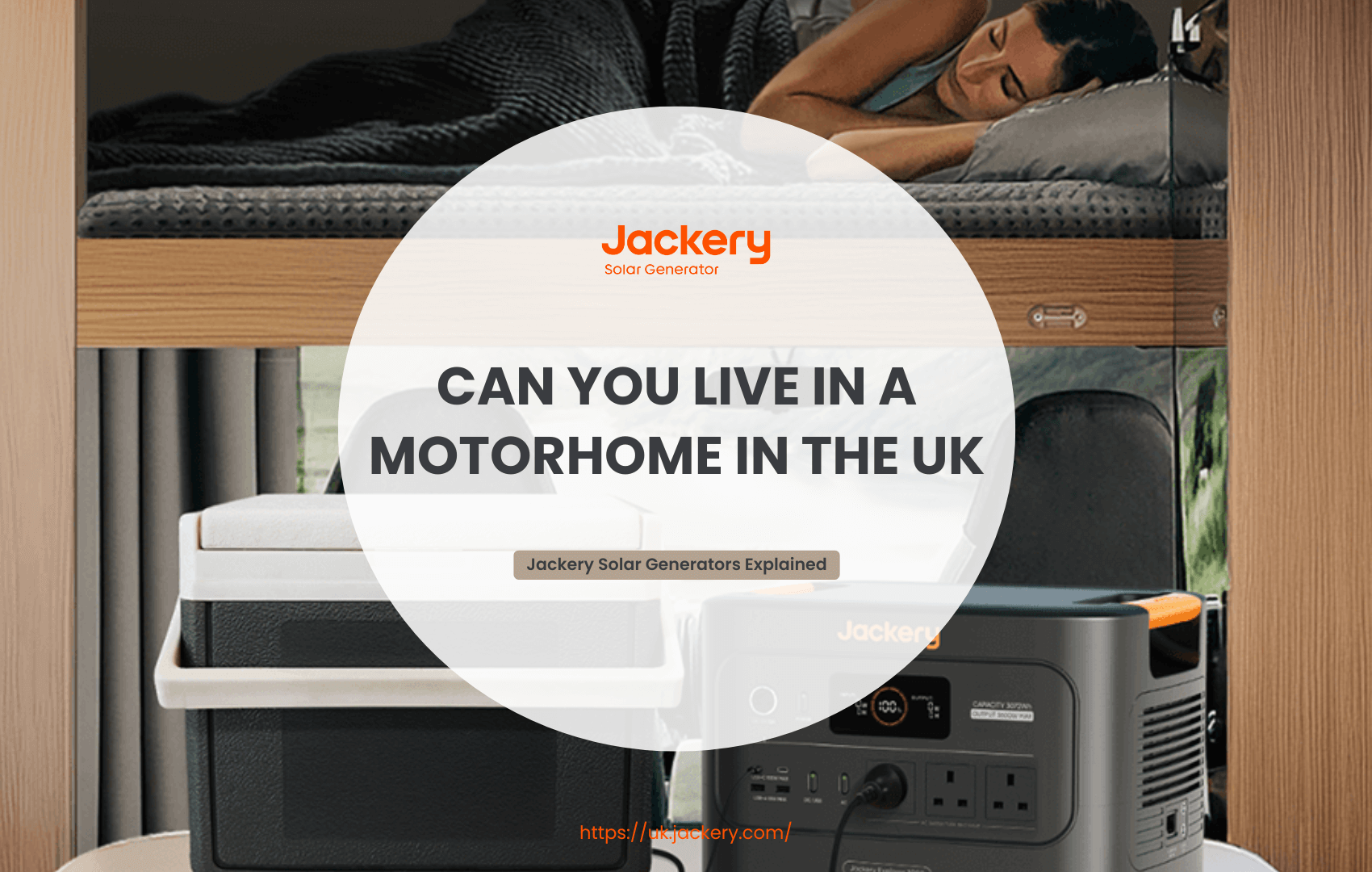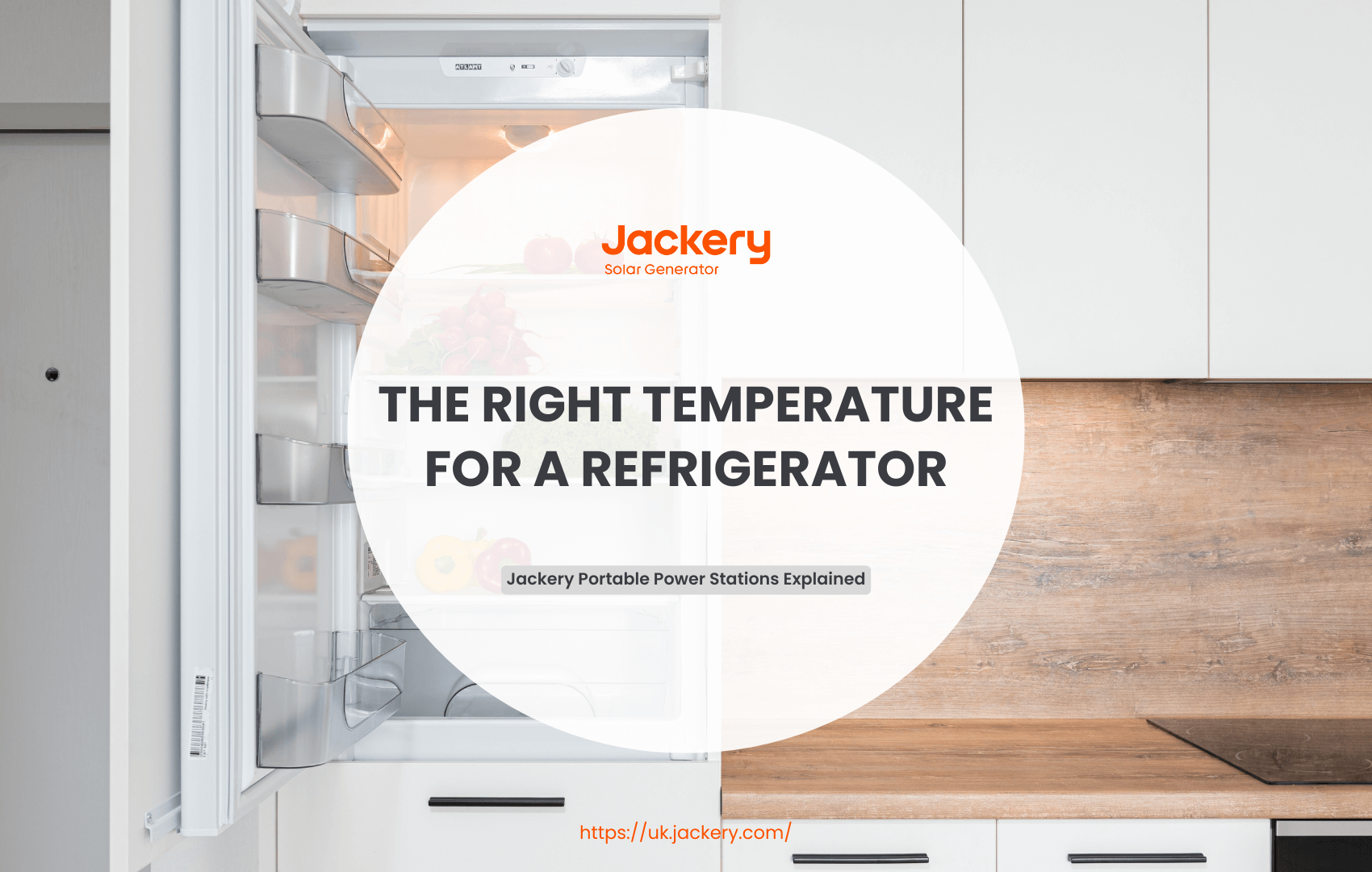Do you want to experience motorhome living, pursue a more adventurous lifestyle, or own a motorhome for holiday travel? But don't want to buy a large or expensive motorhome? Then, converting a van to a motorhome is a fun and affordable option.
However, converting a van to a motorhome requires consideration of ventilation, insulation, electrical and gas installation, and furniture placement.
The most troublesome aspect, electrical system installation, can be replaced with portable power supplies like the Jackery Explorer 3000 v2 or Jackery Explorer 2000 Plus portable power station, which effectively meet the various power needs of motorhome travel.
|
Key Takeaways: |
|
Is It Legal to Convert a Van to a Motorhome?
Yes. It is permitted to convert a van into a motorhome, provided that the frame, engine, or cab structure remains unchanged. The conversion must also meet the DVLA's criteria. The details are as follows:
Requirement 1: It Must Be a Suitable Vehicle Type
DVLA will only consider changing the body type to motor caravan if the body type shown on your V5C registration certificate (log book) is currently one of the following:
|
ambulance box van goods insulated van light goods light van livestock carrier |
Luton van minibus MPV (multipurpose vehicle) panel van specially fitted van special mobile unit van with side windows |
Requirement 2: Compliance with Motor Caravan External Permanent Features
The DVLA requirements for motor caravan external permanent features include:
|
Feature 1: |
2 or more windows on at least one side of the main body (this does not include windows on the driver or passenger doors) to provide a reasonable amount of daylight into the living accommodation |
|
Feature 2 |
a separate door which provides access to the living accommodation of the vehicle (this excludes the driver and passenger doors); a window on this door counts as a separate window on the main body |
|
Feature 3 |
motor caravan-style graphics on both sides of the vehicle |
|
Feature 4 |
An awning bar attached to either side of the vehicle |
|
Feature 5 |
a high-top roof (this does not include a pop-top elevating roof) |
After the modifications are completed, the DVLA may require you to provide this photographic evidence.
Requirement 3: Compliance with Motor Caravan Internal Features
In addition to meeting the requirements for suitable vehicle body types and exterior modifications, the DVLA also requires specific interior changes to your van. For the van interior, the DVLA expects to see:
Seating and tables
Sleeping berths that can be converted from seats
Cooking facilities
Storage facilities
Each category has specific requirements that you must meet. For example, these facilities must be securely fixed to the living compartment, but tables can be designed to be easily removable.
What Should You Consider When Converting a Van to a Motorhome?
Converting a van into a motorhome is an exciting yet challenging task that requires consideration of safety, legality, comfort, and practicality. Successful outcomes require precise planning. Some of the primary considerations when converting a van to a motorhome include:

Checking Ventilation
If you're planning to convert from a van, you'll likely need to install some windows, including a sunroof, to make the interior feel brighter and more spacious. It also requires a proper ventilation system to keep the air circulating inside the vehicle. Furthermore, a ventilation system helps remove water vapour and heat, making the entire vehicle more comfortable.
Thermal Insulation Measures
As is well known, the weather in the UK is often quite cold, making proper thermal insulation measures especially important. When installing thermal insulation materials, it is also recommended to add sound insulation materials to ensure that nighttime noise does not disturb your sleep.
Fresh Water and Wastewater Storage
If you plan to install running water in your motorhome, you will need to consider how to store fresh water and wastewater. You can choose to use an external portable container or a fixed internal water tank. Most motorhomes have the water tank installed under the vehicle and use a 12-volt water pump for supply. Additionally, most owners opt for an external water tank to store wastewater, facilitating easy cleaning in the event of blockages.
Electricity and Gas Installation
Electricity and gas installations are high-risk operations; unless you are highly knowledgeable about them, it is recommended that you have them installed by a trained technician. However, if your electricity needs are not high, consider purchasing a portable power source (such as the Jackery Explorer 3000 v2 or 2000 Plus) paired with solar panels to generate electricity.
Furniture Placement and Space
Vans have limited space, necessitating careful planning, which depends on the cabin's measurements. This includes maximising space efficiency with features like sliding doors, height-adjustable tables, and modular beds. Furniture should be lightweight, multipurpose, and foldable/storable. Furniture arrangement should avoid obstructing windows to ensure adequate natural light and a decent view.
How to Convert a Van to a Motorhome?
Converting a van to a motorhome is a creative and practical project that can meet personalised needs while saving costs. Here's a more detailed and easy-to-follow complete guide:

Step 1: Find the Right Van
Prioritise vehicles with high space utilisation and stable chassis. It's best to bring someone knowledgeable to help you inspect the car; they should be familiar with the mechanical issues to check.
Confirm whether the price includes VAT (which may result in an additional 20% on top of the listed price). Request to see the complete maintenance record and find out the date of the last vehicle inspection (MOT).
Step 2: Design the Layout
Accurately measure all dimensions inside the van, including length, width, height, wheel arch positions, door frame dimensions, etc. Based on the van's interior dimensions and your personal needs, rationally arrange the placement of doors and windows, and plan functional areas (such as a sleeping area, kitchen area, and shower area, etc.). You can use space design apps or tools, such as VanSpace.
Step 3: Prepare the Necessary Tools
The more tools you have, the easier it will be to convert a van into a motorhome, as the right tools can significantly reduce the time and effort required. Below is a list of some essential tools for reference only.
|
Fundamental Tools for Converting a Van to a Motorhome |
||
|
Electric drill Angle grinder Hammer Saw Impact screwdriver Screwdriver |
Wrench Utility knife Level Measuring tape Spiral Wire stripper |
Pipe cutter Welding equipment Goggles Gloves Mask Earplugs |
Step 4: Disassemble and Clean the Van
Remove any unneeded items from the van's interior, such as cargo bed linings, hooks, and seats (if necessary), to make room. Handle with care, preserving any usable components and screws. After disassembly, carefully clean the interior, inspect for and remove any rust, and apply rust-prevention paint.
Step 5: Lay the Flooring
A moisture-proof mat should be laid before the flooring is installed. Select a non-slip, durable, and easy-to-clean flooring material, such as PVC or wood flooring, to provide a smooth surface. Lay the flooring as soon as feasible before adding anything else on top of it.
Step 6: Build the Framework
Using lightweight wood or aluminium profiles, build the framework for the walls, kitchen, bed frames, and other structures according to your design drawings. Ensure all frames are securely fastened to the vehicle body. The best approach is to add as many support beams as possible, as they will be as strong as possible when the cladding is laid on top of them.
Step 7: Install Electrical Equipment
Plan the electrical system and install the primary power source (such as a high-capacity lithium battery), inverter, fuse box, and other necessary components. If you're unsure, contact a skilled electrician. Alternatively, acquiring a portable power station (Jackery Explorer 3000 v2 or 2000 Plus) can give a practical and straightforward power solution for your motorhome, which can be rapidly installed and used. Charging options include regular shore power, solar power (with solar panels), or charging through a car plug while driving.

Step 8: Install Insulation
Lay insulation, such as cotton or panels, on the walls, ceiling, and floor of the motorhome to improve interior insulation and reduce energy consumption. Fill all gaps; this is key to keeping the motorhome warm in winter and cool in summer. Don't forget to install sound insulation under the insulation layer and on the motorhome's dashboard.
Step 9: Wall Covering
After the frame and insulation are finished, add warmth with visually beautiful and long-lasting wall coverings, such as solid wood panelling. Pay close attention to the seams to ensure a good seal.
Step 10: Building Functional Areas
It's time to start building the things you'll actually use in your motorhome life. This means completing the construction of the sleeping area, kitchen area, and shower area.
Sleeping Area: Design a foldable or height-adjustable bed to maximise space efficiency.
Kitchen Area: Install cabinets, countertops, and storage cabinets, and equip with a simple stove, sink, and other necessary appliances.
Shower Area and Toilet: Properly arrange a portable toilet, set up a waterproof shower area, and ensure proper floor drainage to prevent water from pooling.
Step 11: Establish the Water Supply System
Install the fresh and grey water tanks in an appropriate location (under the vehicle) to guarantee stability and easy access for adding and draining water. Install a 12V DC pressure water pump to provide a rapid water supply. Connect the water tank, pump, faucet, and showerhead with PEX or food-grade silicone tubing. An immediate or storage-type water heater (gas or electric) is an option.
Step 12: Install Gas
Install gas equipment as needed. It is best to find a reliable gas engineer to assist and guide the installation. Most other gas equipment (such as gas cylinders, air heaters, and water heaters) needs to be installed in a sealed enclosure with appropriate vents.
Step 13: Final Testing and Commissioning
Thoroughly check all systems: Is the electrical system working properly? Are there any leaks in the water system? Is there any gas leak? Additionally, inspect the overall structural integrity of the vehicle, ensuring all components are securely installed and free from sharp protrusions.
Step 14: Add Decorations
Add simple decorations according to your personal preferences (such as curtains, LED ambient lighting strips, soft furnishings, carpets, and paintings) to enhance the comfort and aesthetics of your living space.
Jackery: A Great Motorhome Power Supply
Setting up the electrical system in converting a van to a motorhome is not only complex but also fraught with danger, making it a significant challenge. Today, portable power supplies are being considered as an alternative to traditional circuit setups. Jackery Portable Power Stations, with their core strengths of high capacity, high safety, fast charging, and intelligent portability, perfectly meet the core demands of motorhome travel for stable, clean, and flexible power.
In particular, the Jackery Explorer 3000 v2 and Jackery Explorer 2000 Plus each have their own focus in terms of capacity, power, and expandability, effectively meeting the diverse power needs of motorhome travel.
Jackery Explorer 3000 v2
If you're planning your motorhome's power system, the Jackery Explorer 3000 v2 is a reliable choice, especially for users looking to break free from campground power limitations and achieve true freedom of movement. Here's an in-depth analysis of why the Jackery Explorer 3000 v2 is considered an excellent motorhome power source:

High-Capacity Battery: The Jackery Explorer 3000 v2 boasts a 3072Wh battery capacity, supporting a 3600W (7200W peak) sine wave inverter output, providing continuous power to a variety of devices. It uses a LiFePO4 (lithium iron phosphate) battery that retains over 70% of its capacity after 4000 charge-discharge cycles, providing reliable power for 10 years of everyday and emergency use.
Portable and Compact: The Jackery Explorer 3000 v2 is 47% smaller (16.4 x 12.8 x 12 in) and 43% lighter (59.5 lbs) than comparable goods, making it simple to store at home or transport in your vehicle for wilderness activities. The improved CTB⁸ technology allows for a more robust and compact design, with 14% greater space utilisation and durability compared to the Explorer 3000 Pro. This leads to a safer travel experience.
Multiple Charging Options: The Jackery Explorer 3000 v2 can be charged by 1000W solar input in just 3.5 hours, making it suitable for extended outdoor use. It can be quickly charged using AC power, which takes approximately 1.8 hours to charge fully. However, AC + DC (54V) charging only takes 1.4 hours. It can also be recharged while driving, using the cigarette lighter plug or a specific interface.
Smart Control and Safety: The Jackery Explorer 3000 v2 features an LCD that shows real-time battery level, power output, and input/output status. It also supports Bluetooth connectivity for remote monitoring via the Jackery App, allowing you to control everything from anywhere, at any time. In addition, it features a 12-layer BMS battery management system, a constant voltage pure sine wave output, and surge protection, ensuring stable power in any environment while protecting your appliances.
Jackery Explorer 2000 Plus
The Jackery Explorer 2000 Plus offers motorhome travellers a green and convenient energy solution with its efficient solar charging, large capacity, safety, reliability, and intelligent control, truly enabling freedom of outdoor power. Here's an in-depth analysis of why the Jackery Explorer 2000 Plus is considered an excellent motorhome power source:

Large Capacity, Long Battery Life, and High Power Output: The Jackery Explorer 2000 Plus features a built-in 2 kWh (2042.8Wh) lithium iron phosphate battery, expandable up to 12 kWh, elevating off-grid living to a whole new level. Its rated output is 3000W, with a peak output of up to 6000W, efficiently powering high-powered devices in the motorhome, such as induction cookers, ovens, coffee makers, and oxygen concentrators.
High-Efficiency Solar Charging Technology: The Jackery Explorer 2000 Plus is compatible with SolarSaga solar panels, boasting an industry-leading solar conversion efficiency of up to 25%, a longer lifespan, and the ability to generate more energy. For example, equipped with six SolarSaga 200W solar panels, it can be fully charged in as little as 2.4 hours, achieving fast charging and making it suitable for off-grid outdoor charging.
Rich Interface Configuration: The Jackery Explorer 2000 Plus features multiple output ports, including three AC outlets, two USB-A ports, two USB-C ports, one Car Port, and one DC Expansion Port. It can simultaneously power multiple devices, meeting the power needs of various scenarios in a motorhome, such as lighting, cooking, cooling, and entertainment.
Safe and Environmentally Friendly: The Jackery Explorer 2000 Plus features multiple safety protections, including ChargeShield, which provides 62 protection mechanisms, 12 protection algorithms, and four physical safety protections. Through a unique stepped variable-speed charging algorithm, this technology improves safety and extends battery life by 50%. Furthermore, it operates extremely quietly, with a noise level of only 30 decibels. Please activate the silent charging mode using the Jackery APP.
How Much Does It Cost to Convert a Van to a Motorhome?
The entire cost of converting a van to a motorhome varies according to the extent of customisation, materials utilised, and configuration. Conversions are typically classified into three types: basic, mid-range, and luxury, each varying in terms of comfort, functionality, and price.

Basic Conversion Costs
The basic cost of converting a van to a motorhome ranges from £2,000 to £5,000, with an emphasis on affordability while providing the core requirements of a motorhome. This budget typically covers insulation, basic flooring, a simple bed frame, and a rudimentary kitchen with a portable gas stove.
The electrical system is often restricted to recreational batteries for USB charging and LED lights, with no solar panels or sophisticated cabling. Instead of a whole plumbing system, water storage is often achieved using a manual pump and a kettle.
Mid-Range Conversion Costs
The mid-range cost of converting a van to a motorhome is between £5,000 and £15,000, taking into account economy, comfort, and functionality. This budget covers higher-quality insulation, an entire electrical system, solar panels, and a complete kitchen unit with a washbasin and running water. Heating equipment, such as diesel heaters, is also widespread, allowing the motorhome to be used all year round.
Professionally fitted lithium-ion battery packs can power small appliances, such as refrigerators and induction cooktops. While conversions can be completed independently, some owners prefer to hire specialists for electrical and plumbing installations, which increases the cost.
Luxury Conversion Costs
Luxury conversion projects, such as converting a van to a camper, offer fully bespoke, high-spec interiors for between £20,000 and £50,000 or more. These conversions include premium insulation, high-end wood or vinyl composite flooring, full-size mattresses, custom cabinetry, and built-in seats.
Advanced electrical systems feature multiple solar panels, lithium-ion battery packs, inverters, and intelligent monitoring systems, enabling off-grid living. Kitchens come fully equipped with ovens, refrigerators, and even hot water systems, while bathrooms may contain showers, composting toilets, and greywater management systems.
Below is a detailed cost breakdown for converting a van to a motorhome, for reference only:
|
Insulation and Interior Panelling |
Foam board |
£50 – £150 |
|
Spray foam |
£200 – £500 |
|
|
Reflective insulation |
£30 – £100 |
|
|
Plywood |
£100 – £300 |
|
|
Tongue and groove |
£150 – £400 |
|
|
Vinyl |
£100 – £250 |
|
|
Electrical System Upgrades |
Battery and inverter |
£200 – £500 |
|
Wiring and fuse box |
£50 – £150 |
|
|
Solar panels |
£300 – £1,000 |
|
|
Additional outlets and USB ports |
£50 – £200 |
|
|
Battery management systems |
£200 – £600 |
|
|
Fridge |
£300 – £800 |
|
|
Microwave |
£50 – £150 |
|
|
Plumbing and Water Systems |
Portable water containers |
£20 – £50 |
|
Manual pump |
£10 – £30 |
|
|
Fixed water tanks |
£100 – £300 |
|
|
Electric pump |
£50 – £150 |
|
|
Sink and tap |
£50 – £200 |
|
|
Hot water heater |
£100 – £300 |
|
|
Greywater systems (Basic setup) |
£20 – £100 |
|
|
Composting toilet |
£500 – £1,000 |
|
|
Cassette toilet |
£50 – £200 |
|
|
Custom Furniture and Storage Solutions |
Simple fold-out bed |
£100 – £300 |
|
Built-in bed with storage |
£200 – £500 |
|
|
Basic plywood cabinets |
£100 – £300 |
|
|
Custom-built cabinets |
£300 – £1,000 |
|
|
Fold-out table |
£50 – £200 |
|
|
Convertible seating/bed |
£100 – £400 |
|
|
Lightweight wood |
£100 – £300 |
|
|
Durable hardware |
£50 – £200 |
(Data Source: motorway.co.uk)
Should You Buy a Ready-Made Motorhome?
Deciding whether to buy a ready-made motorhome or convert a van into a motorhome can be challenging. Below, we'll review both options to help you make an informed decision.
Advantages and Disadvantages of Buying a Ready-Made Motorhome
Expert manufacturers typically build ready-made motorhomes, and their designs undergo rigorous testing and verification to ensure safety and functionality. After-sales service and maintenance are usually smoother, with major manufacturers often having extensive service networks that ensure rapid problem resolution, even when travelling.
However, the price of a ready-made motorhome typically includes research and development, production, and brand premium expenditures, which may make it more expensive. While some ready-made motorhomes allow for customisation, the possibilities are restricted and may not fulfil all individual needs.
Advantages and Disadvantages of Converting a Van to a Motorhome
Converting a van to a motorhome enables complete customisation and layout based on your needs and tastes. Furthermore, it allows you to select different levels of materials and settings based on your budget, which may result in a lesser initial investment than purchasing a comparable ready-made motorhome.
Private modifications, on the other hand, may involve structural and functional alterations to the vehicle, necessitating knowledge of and adherence to applicable legislation. Safety risks may arise during the renovation process, particularly with critical systems such as electrical and plumbing.
|
|
Advantages |
Disadvantages |
|
Buying a Ready-Made Motorhome |
Enhanced security Worry-free and effortless Comprehensive after-sales semotorhomeice Higher quality and reliability |
Limited personalisation Higher price |
|
Converting a Van to a Motorhome |
High degree of customisation Relatively controllable cost |
Higher security and quality risks Poorer continuity and convenience of after-sales maintenance |
In short, if you prioritise safety, reliability, and convenience after-sales, and want immediate use, purchasing a ready-made motorhome may be a more suitable option. However, if you have specific personalised needs, strong DIY skills, or can find a trustworthy professional modification team, then converting a van to a motorhome might be a better option.
FAQs
The following are the frequently asked questions about how to convert a van to a motorhome:
1. Can I convert a van to a motorhome myself?
Absolutely. Converting a van into a motorhome involves designing the layout, disassembling the van, installing flooring, and adding insulation. You can learn a lot along the process. If you choose, you can ask friends and family for assistance or engage professionals to aid with any difficult sections.
2. Which type of van is best suited for conversion to a motorhome?
Mercedes-Benz Sprinter, Ford Transit, or Ram Promaster are all suitable for conversion to motorhomes. They are known for their durability and excellent performance, making them popular choices for both DIY and professional conversions.
3. How much does it cost to convert a van to a motorhome?
In the UK, converting a van to a motorhome typically costs between £2,000 and over £50,000. DIY conversions can cost between £2,000 and £10,000, while professional conversions range from £10,000 to over £50,000, depending on the complexity and the inclusion of luxury features.
4. Is it safe to convert a van to a motorhome yourself?
While some aspects of converting a van to a motorhome can be easily done at home, others are best handled by professionals. Electrical and gas installations are high-risk operations, and it is recommended that you have them installed by trained technicians.
Final Thoughts
Nowadays, many people choose to convert a van to a motorhome themselves instead of buying a professionally customised one. The steps involved in converting a van into a motorhome include designing the layout, disassembling the van, installing flooring, and insulating the van.
DIY converting a van to a motorhome is less expensive, allows for customisation to your specific needs and requirements, and is unique. Furthermore, if you have the time and money, it's a rewarding challenge. However, if safety, convenience, after-sales service, and immediate usability are your top priorities, then buying a ready-made motorhome might be a more suitable option.

